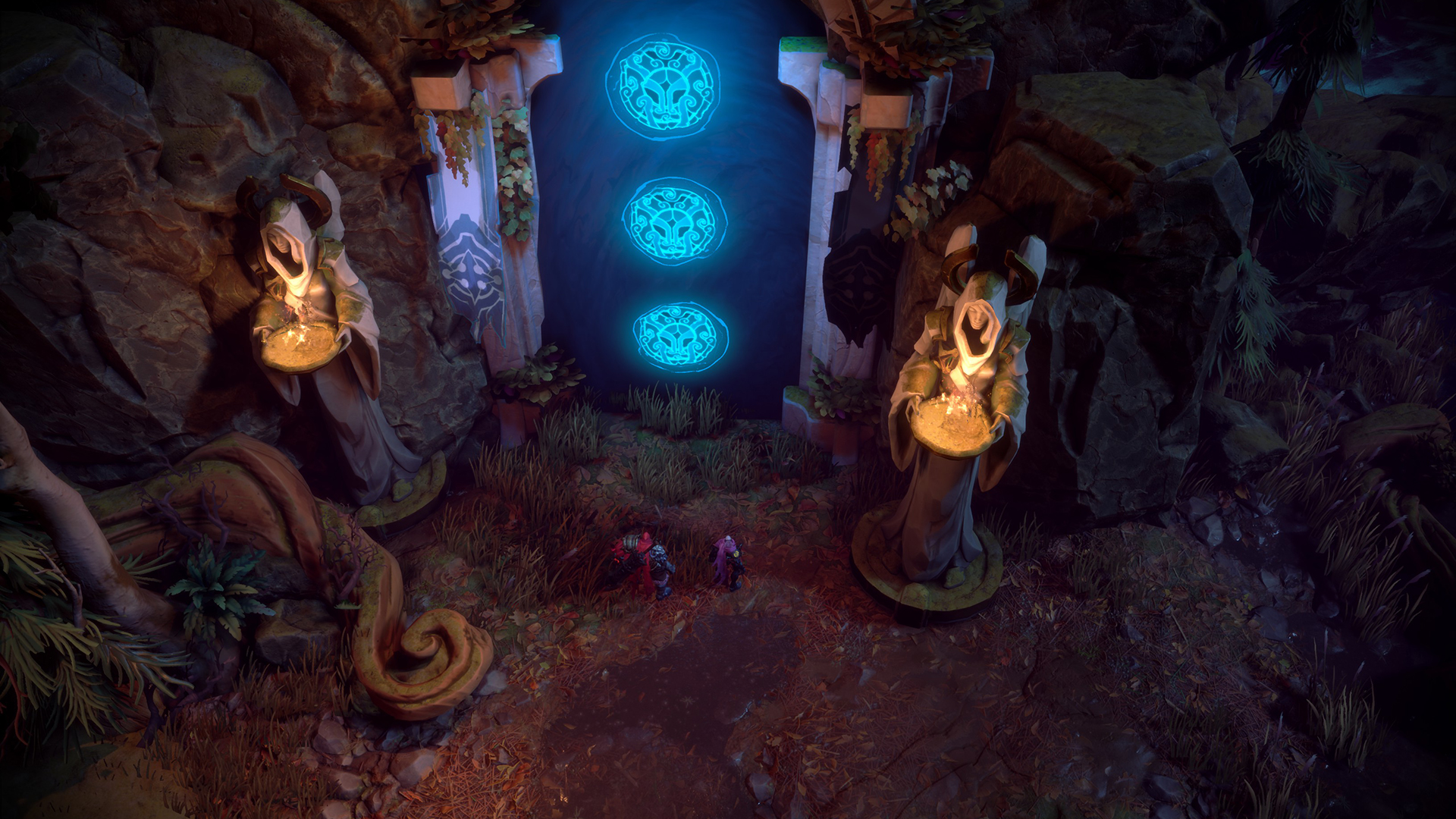GamesRadar+ Verdict
Darksiders Genesis find new fun in a new gameplay format. While retaining some of the aesthetic and mechanical qualities that drew fans in to begin with
Pros
- +
Lots of variety in the combat
- +
Engaging puzzle-solving and platforming
Cons
- -
Story feels thin
- -
Collision bugs can get in the way
Why you can trust GamesRadar+
Darksiders is downsizing a bit in 2019, but the series hasn't lost a step. Darksiders has shed its open-world action roots in favor of a fast-paced isometric 3D action-platformer in the style of games like Diablo and Torchlight. As with past installments, Darksiders Genesis is easily compared to other action games, but it does just enough to set itself apart. From this new perspective, the puzzle-solving and platforming the series is known for feels fresh and familiar. Above all, though, it is a hack-and-slasher, with legions of enemies to dismantle and crush alone or with a co-op partner. And though it can't help but get a bit repetitive as the adventure wears on, Darksiders Genesis feels right at home in its new point of view.
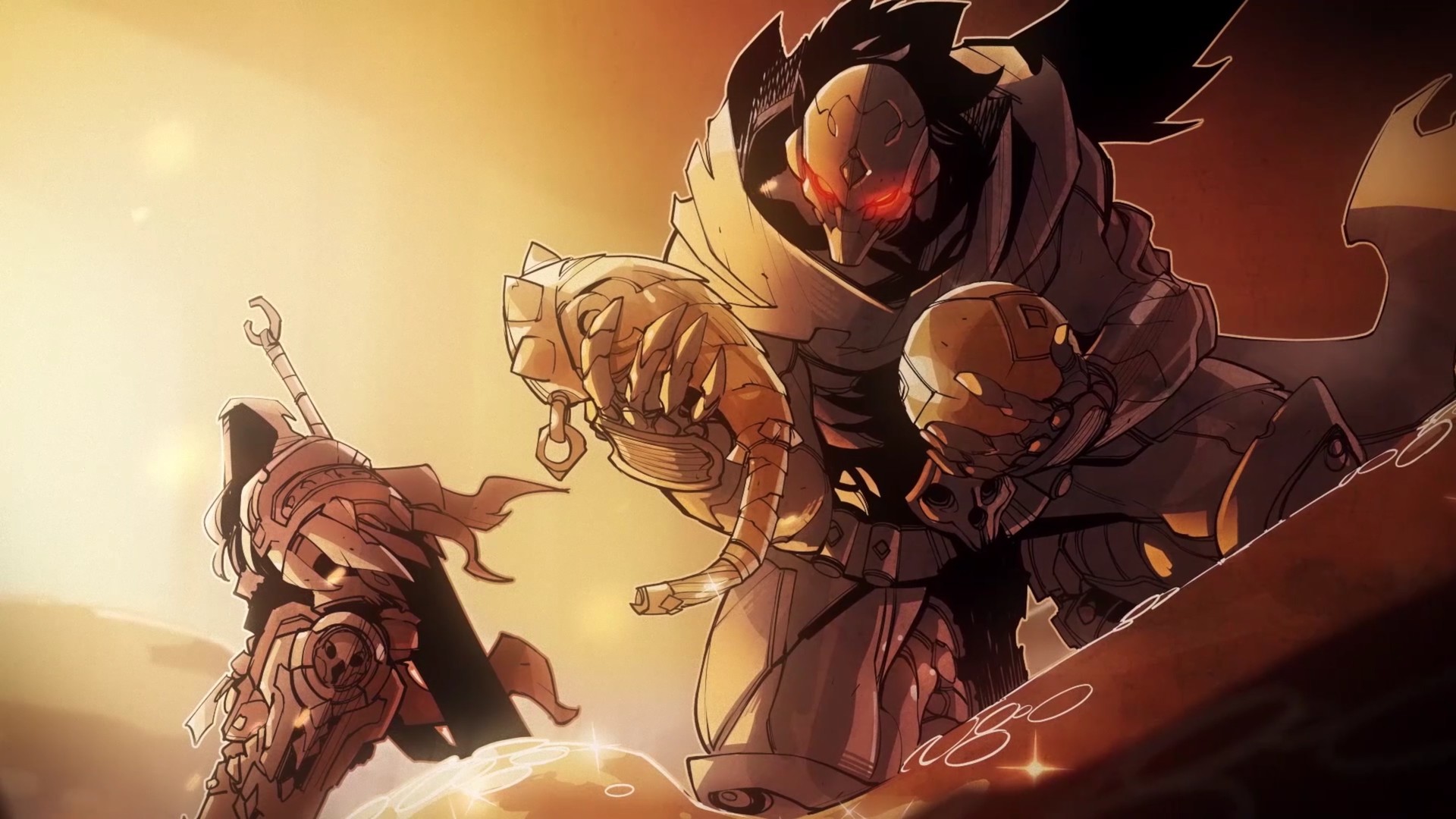
Release date: December 5, 2019
Platform(s): PC, Google Stadia
Developer: Airship Syndicate
Publisher: THQ Nordic
In case the name didn't give it away, Darksiders Genesis is a prequel. Darksiders' original hero, War, and the previously unplayable fourth horseman, Strife, team up for a quest to maintain the balance for the charred council that, over time, reveals itself to be very relevant to apocalyptic events of the other games. In true prequel fashion, it's a heavy lore hit for fans of the first three games, bringing characters back in younger forms and in different contexts. Despite this, there isn't all that much story here. The missions feel like excuses to send War and Strife out into different locations, with only a few snippets of dialogue, and the occasional semi-animated comic cutscene, there to help keep the plot moving forward. For anyone who isn't already inundated by Darksiders mythos, this will not be a thrilling tale.
Most of the time, though, that isn't going to impact your enjoyment of the game one bit. Most of Darksiders Genesis is spent in some combination of fighting, puzzle-solving, and platforming, not unlike the original three games. In fact, it's surprising how similar Genesis feels to previous Darksiders. Developer Airship Syndicate clearly understands the subtleties of what gives Darksiders its visual and mechanical identity, and that can be felt in everything Genesis does – from the design of the levels to the way that the characters hack-and-slash through them.
War and Strife
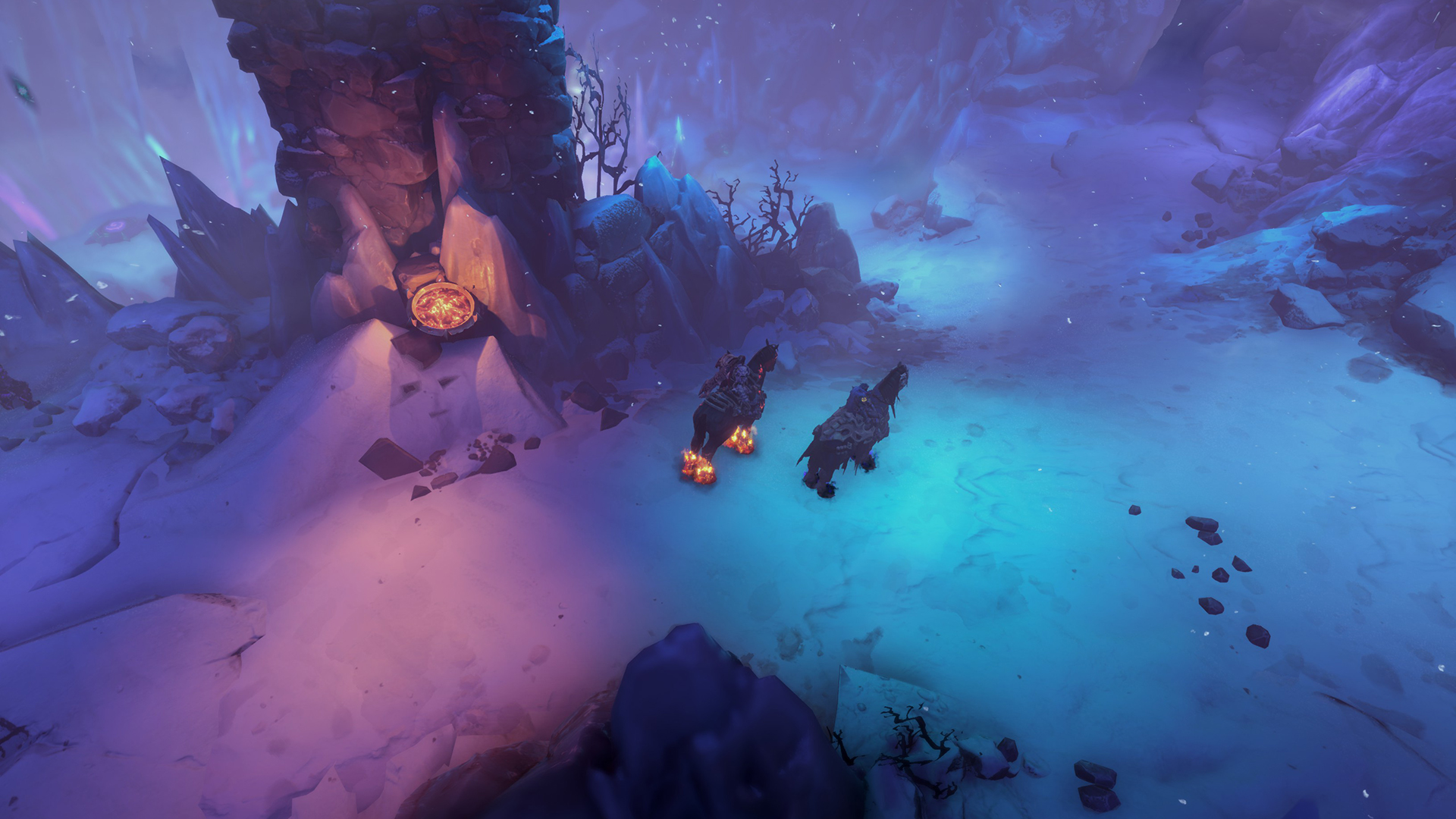
If you play Darksiders Genesis alone, you can switch between the two characters on the fly. In combat, that lets you swap between War's melee-first combat, which features strong and weak melee attacks and feels similar to his combat from previous Darksiders games, and Strife, whose two types of guns, which you fire with the right bumper and trigger, turns the game into a twin-stick shooter. Though there is a core stick-and-move strategy that applies to both characters, they feel very different and allow you to approach combat scenarios in different ways. Playing solo, I found myself switching characters often, both as a way of gaining an advantage in combat and simply for fun. The game is never so easy that you won't consider your tactics, but rarely hard enough that you need to approach a fight perfectly.
To further distinguish the two characters, each has a small number of special abilities, and customizable weapon traits – Strife gets different kinds of ammo that range from a laser beam to flame rounds to a charge-up gravity well shot that draws enemies away. War gets different blades that add specialty attacks and passive bonuses. All told, each character's arsenal brings a lot of nuances and gives you the ability to change things up whenever you want. Having the ability to mix things up keeps things from getting stale, even after you fight wave after wave of the same enemies.
That said, you will have the occasional grapple with monotony during your time with Darksiders Genesis. Though there are a decent number of enemies across the game overall, they are portioned out into different types (demons, zombies, swamp creatures, etc) on a level by level basis. Each mission, most of which take between 30-60 minutes, tend to throw the same enemies at you over and over. It means that while the game is constantly challenging you, the lack of variety can make Darksiders Genesis feel like a bit of a grind at times.
Thinking on your feet
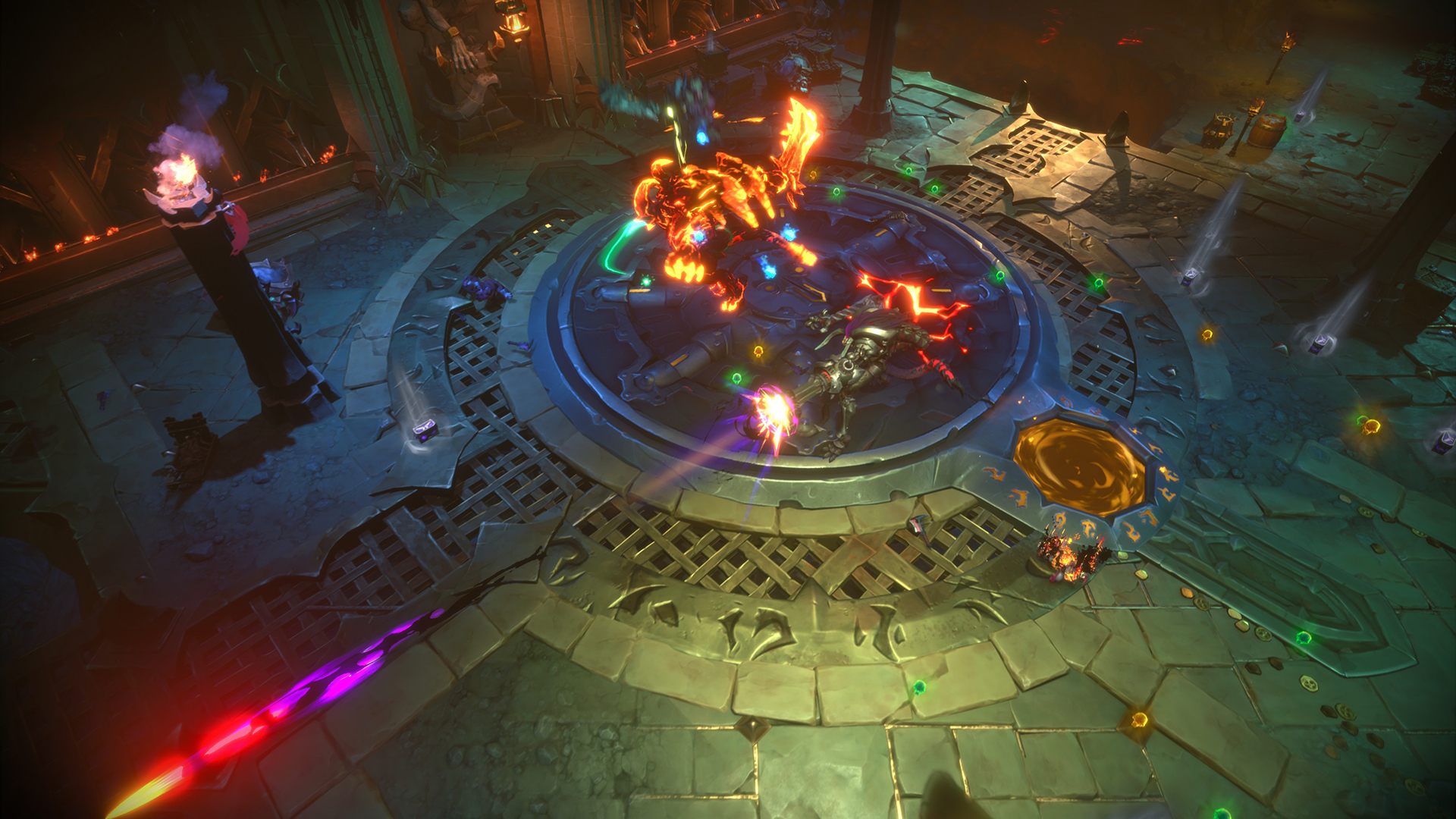
Between combat arenas, you'll also have the chance to enjoy a fair amount of exploration, puzzle-solving, and platforming. It's here where much of the friction in Darksider Genesis can be felt. Traversal doesn't always feel great, and you'll often find yourself fighting against an awkward camera that makes it tough to control the characters – particularly when trying to navigate platforms, which can often lead to you jumping to your accidental doom.
Those issues are compounded by technical issues that make searching any space a chore. It seemed like nearly every area of every level had at least one spot with some uneven terrain where I would get caught on the floor. Most of the time it was only for a moment, but it always long enough to be an annoyance and added an extra layer of frustration some of the game's toughest spots, including two late-game boss fights. It is entirely possible that a good number of these get patched out at or shortly after launch, but it was widespread enough that it couldn't be ignored.
Luckily, not all the puzzle-solving is traversal-based. War and Strife both have a set of unique items they find over the course of the journey, which you use to open paths forward, as well as in optional puzzles that will help you find health upgrades and other permanent improvements. Though I wouldn't say this anything in Darksiders Genesis will break your brain, but there were a few that took me a moment to figure out: It pushes you to use each piece of puzzle-solving gear, and sometimes combinations of two or three, to get an item or move forward.
This also sets the stage for some Metroidvania-style backtracking. Many of the early levels feature obvious cues for skills and equipment you don't have the first time through, in the hopes that you'll replay the levels again to find them. (Don't worry: You can go back, solve a puzzle, and warp out without playing through the whole thing again.)
Looking for loot
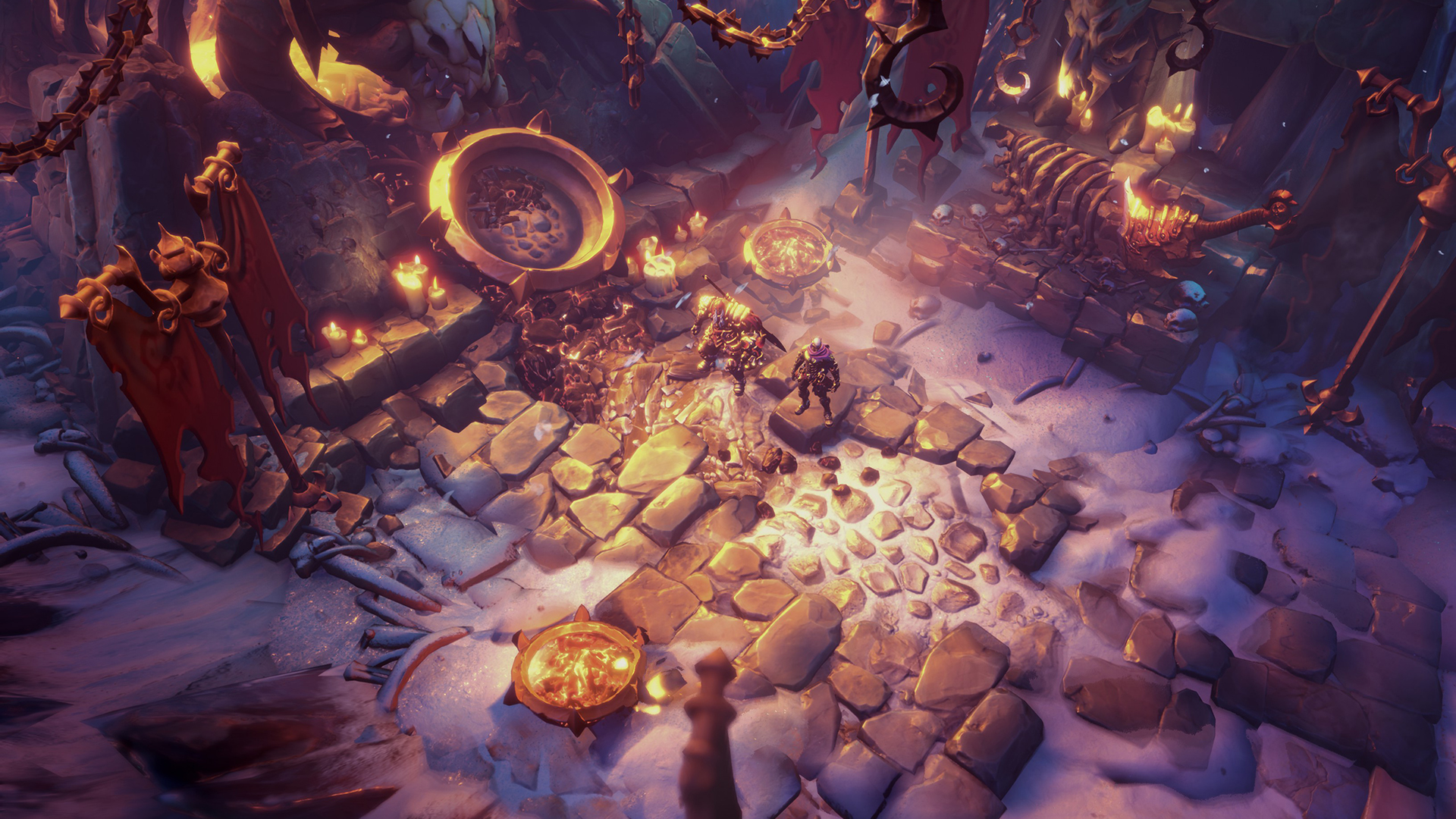
This brings us to a larger discussion about loot and replayability. While it's easy to rush to make a comparison between Darksiders Genesis and Diablo, it doesn't feature the level of depth to really support that level of long-term repetitive play. While there are hooks that will allow you to keep improving your character even after the credits roll, progression is very sensibly designed to be suitably filled out, if not completed, in a single playthrough.
Instead of earning new weapons and armor, War and Strife pick up creature cores – bonuses that drop from each enemy type, which you equip to specific slots on a grid. The enhancements vary; some are simple health or attack improvements, while others enhance specific abilities depending on if you play as War or Strife. Each creature core, including ones left by bosses, can be enhanced by picking up more of the same kind. Likewise, the grid calls for different types of cores in each slot, so there's room to improve your characters (and their Destiny-style "power score") by moving things around.
If you're committed, it's a serious grind. There seem to be ways to improve your chances of getting a core, like "executing" enemies via a prompt when they're low on health, but there's never a guarantee. I managed to max out a few by the end of my playthrough, but I think it would take a long time to max out the complete grid. Since there's no endgame to speak of beyond mopping up items you may have missed, it feels like it would be a lot of work. Then again, I never felt compelled to get more creature cores than I earned naturally, aside from one or two spots where I got stuck.
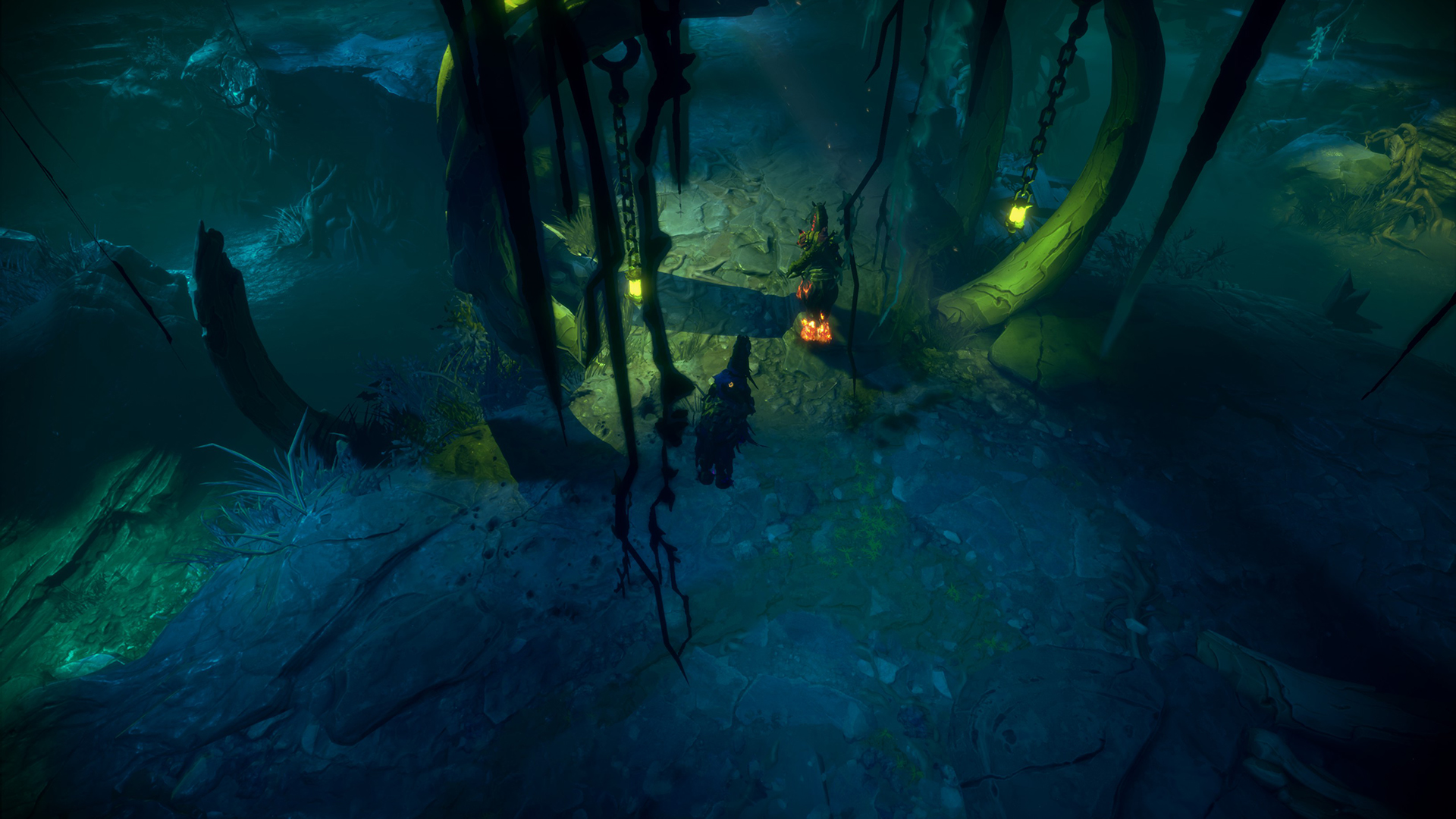
You also earn souls from killing enemies and opening chests, which you can use as currency at the two shops at checkpoints and between levels. With souls, you can buy upgraded abilities, permanent upgrades, and, yes, more creature cores. And if you are looking for an excuse to keep playing, there is a wave-based arena mode with a high-score chase. There are no leaderboards, unfortunately, so it has a limited appeal, but it something you can repeat and improve upon, should you be so inclined.
On the whole, Darksiders Genesis is a fun, but samey hack-and-slash romp. I've always admired the Darksiders franchise for jumping to different styles of play from game to game: Darksiders Genesis is its biggest jump yet, and one of its most successful. Though it feels understated, thanks to a pulled-out camera and a less flashy approach than the original three, it's a well-designed gauntlet of quick, mashy fights and light brain teasers. It's not going to set the world on fire, but it's all good fun.
Mike Epstein is now the Reviews Editor for Popular Science. However, he was once a freelance games and technology journalist covering video games and hardware reviews, features, and more. His words have appeared on Lifehacker, GamesRadar, IGN, Gamespot, PC Mag, and more.
